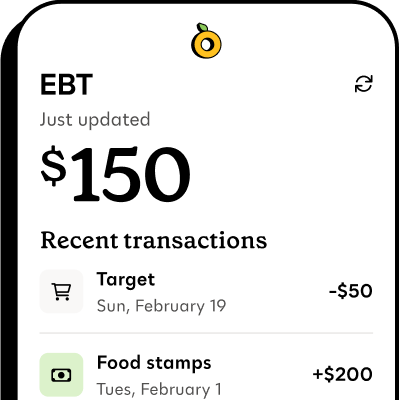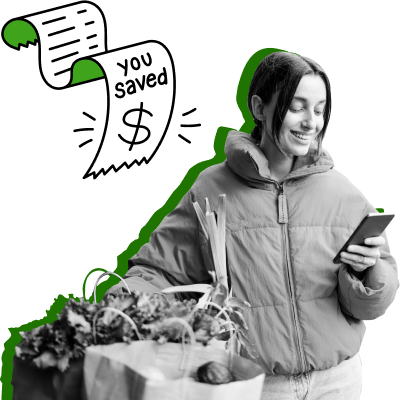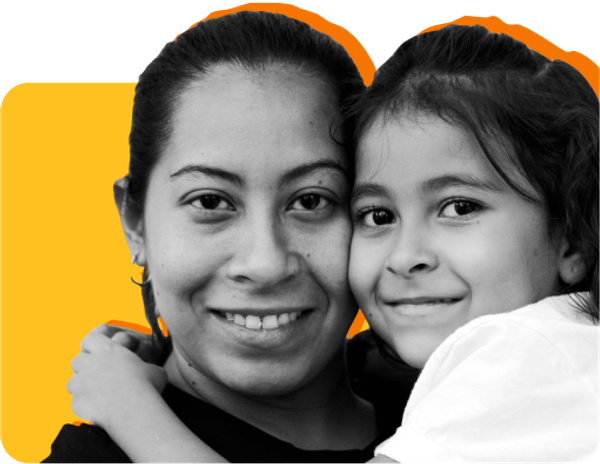8 Tips for finding cheap groceries

Food costs are expected to rise 2.9% in 2025, according to the USDA. Even just staying on top of necessities and keeping shopping trips within your budget can be a challenge—especially if you’re trying to get the most of your SNAP benefits.
Despite the high prices, there are still some tricks to finding cheap (or at least cheaper) groceries. Here are some tips to help you save at the supermarket.

Propel is the #1-rated EBT balance checking app
1. Use coupons#1-use-coupons
Strategic couponing can save you cash when it’s time to check out, but this tip starts before you visit the grocery store.
Download apps for grocery stores in your area and check weekly digital coupons for savings before you put together a shopping list. Also keep an eye out for digital rebates.
Not sure if a sale on an item is considered a good deal? Use a price tracking or price comparison app to research whether the sale is worth it or if you can get the item at a better price at another store.
While you’re at it, join any (free) loyalty programs of grocery stores in your area. You could be rewarded with cash back at checkout or specialty sales.
2. Buy in bulk#2-buy-in-bulk
Consider buying any nonperishable items (like rice, dried beans, or oats) in bulk. This can save both money and time, since you can make fewer shopping trips in the long run.
You can save on things like:
- Dried fruits
- Rice and pasta
- Beans
- Snack foods
- Cereal
- Meat or seafood (if you can freeze some)
- Canned foods, like tomatoes
- Olive or vegetable oil
- Toiletries
- Paper goods
Groceries will almost always cost less when bought in bulk. To avoid food waste, don’t bulk buy anything that can go bad, like dairy or fresh produce, unless you have a good way to store it.
You may be able to purchase items in bulk at your local grocery store or co-op if they have a bulk foods section.
Big box membership stores like Sam’s Club and Costco sell almost exclusively in bulk (and take EBT), although may need a membership to shop there.
3. Comparison shop#3-comparison-shop
It may not save you time, but getting your groceries from multiple stores can save you money if you comparison shop for the best prices on different items.
For instance, you may find that one store has a deal on ground beef while another has better prices on produce—and you might be better off buying your toiletries at a drug store than getting them at the supermarket.
Use a price tracking app or check grocery store websites to find the most affordable options in your area.
4. Visit food pantries#4-visit-food-pantries
Food pantries are community resources that offer free food to people who need it, with no applications, interviews, or approvals required.
While you can’t control what’s in stock at the food pantry, stopping in to pick up basics can help cut down on the cost of your grocery bill, especially when it comes to fresh produce and other perishables.
Visit Hunger Free America or 2-1-1 to find a food pantry near you.
5. Download the Propel app#5-download-the-propel-app
If you get SNAP benefits, using Propel to check your EBT balance can also get you access to special deals and grocery store coupons specifically for Propel users.
Setting up Propel is easy, just download the app on your phone and you’ll be able to see deals and offers for EBT users.

Balance your grocery budget and get access to deals with Propel
6. Pay attention to unit price when you’re grocery shopping#6-pay-attention-to-unit-price-when-youre-grocery-shopping
Trying to determine the best deal doesn’t always come down to just the price tag. Unit price can be a powerful tool to figure out which item is the better deal when considering two similar products.
Here’s how to calculate unit price:
Price of item / unit weight or number of items = unit price
By comparing the cost per ounce, pound, or liter, you can see which option is cheaper in the long run, even if the total price appears higher.
For example, a 16 oz. jar of peanut butter for $3.20 has a cost per ounce of $0.20, while a 28 oz. jar for $5.00 costs about $0.18 per ounce. The bigger jar is the better deal per unit, even though it’s more expensive up front.
7. Buy frozen over fresh#7-buy-frozen-over-fresh
Buying fresh berries or asparagus in the off-season gets expensive. But the frozen version can be just as nutritious, is usually picked at peak ripeness, and is typically much cheaper, especially when it’s an out of season fruit or vegetable.
If you have the freezer space to spare, purchasing frozen produce over fresh can save you money, and avoid food waste. This trick helps you enjoy variety year-round without the markup.
8. Shop farmer’s markets for SNAP savings#8-shop-farmers-markets-for-snap-savings
Fresh local produce can be expensive, but if you’re eligible for SNAP benefits, you may be able to double your SNAP dollars at your local farmers market.
Some farmers markets participate in programs that will double your EBT benefits up to a certain dollar value— which means you may be able to buy $40 of SNAP-eligible produce for just $20.







